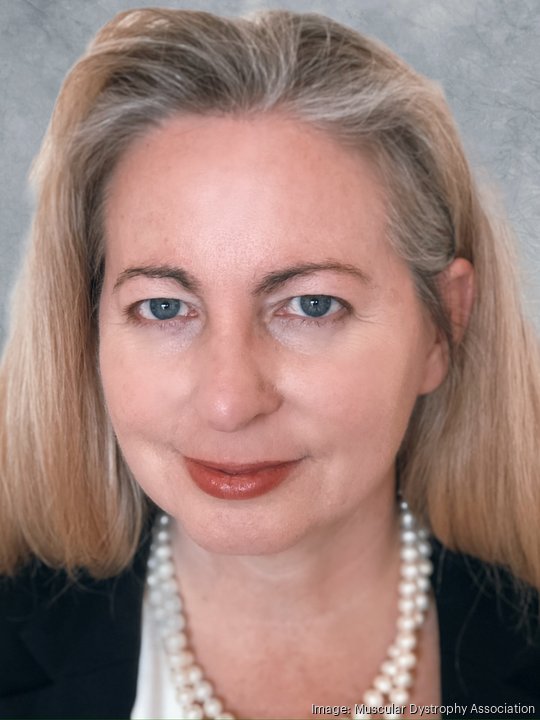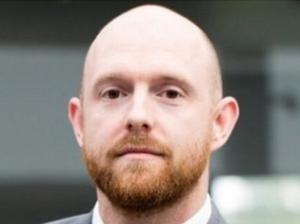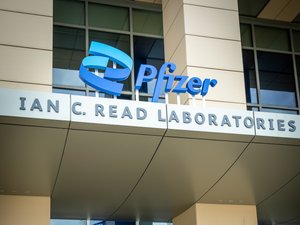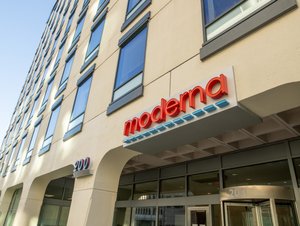![M Lumley + Myles Photo[75]](https://media.bizj.us/view/img/12469496/m-lumley-myles-photo75*540xx4032-2268-0-378.jpg)
Myosana Therapeutics CEO Matthew Lumley discovered his current company not as a business leader, but as a parent.
Lumley, who has held director roles at Pfizer and Moderna, has a 6-year-old son named Myles with Duchenne muscular dystrophy (DMD), a devastating disease found mostly in boys that leads to muscle degeneration and, eventually, death.
Seattle-based biotech Myosana was founded by DMD researchers at the University of Washington and caught the eye of Lumley after his son was diagnosed in 2020.
“When my son was diagnosed, I went on a journey that many parents go on,” Lumley said. “I actually reached out to Myosana, recognizing the potential utility of the technology.”
Lumley said the founders, UW researchers Nick Whitehead and Stan Froehner, had a tremendous idea, but the company at that point was mostly an academic lab and not a full-fledged business. Lumley became a member of the board before officially taking over as CEO in January.
Myosana uses gene therapies in which it replaces missing genes to restore normal function in cases of neuromuscular and cardiac disease. The 5-year-old company is starting with DMD but feels its technology could target a range of diseases.
DMD affects six people out of 100,000 in Europe and North America, according to the Muscular Dystrophy Association (MDA). The disease causes progressive muscle degeneration and weakness. Boys with DMD might hit early milestones but eventually fall behind their peers for movements like walking or jumping. They eventually lose the ability to walk and need a wheelchair. Medical advances have prolonged life expectancy, with survival into the early 30s becoming more common, but problems with the heart and breathing eventually lead to death.
Treatments for DMD are limited. Steroids can help delay the effects but have brutal side effects. Current viral gene therapies can help, but because the body builds an immune response, patients can’t redose. Myosana, on the other hand, is developing non-viral gene therapies. The aim is a treatment that allows patients to redose, stave off the disease for longer and improve quality of life.

For Lumley, the hardships of DMD are all too real. Lumley describes Myles as a happy child who can walk and play, but he tires more easily than normal. The family uses a wheelchair for longer walks so Myles can save his energy for fun activities. He likes swimming, Minecraft and watching videos on YouTube, and Lumley said the disease hasn’t reached the point where the muscles and physical ability start to decline. Myles’ two older sisters know he has a disease even if they don’t fully understand the long-term prognosis yet.
“That’s a conversation that we have to have but one that we don’t want to rush,” Lumley said. “Ten-year-olds and 8-year-olds shouldn’t be talking or worrying about when their brother is going to die and when their brother is not going to be able to come on holiday.”
Myosana raised a $5 million round in January. Whitehead and Froehner have both spent decades researching muscles. Myosana’s backers include the MDA, CureDuchenne Ventures and Parent Project Muscular Dystrophy.

Sharon Hesterlee, chief research officer at the MDA, said the organization has funded Whitehead and Froehner in the past. She added that it would be easier to stop the progression of the disease rather than to try and replace muscle that is lost.
“We’re optimistic, especially with the ability to re-treat as (DMD patients) grow,” Hesterlee said. “That’s really where the potential lies. We could make the disease look very different.”
Lumley said the best-case scenario would be for Myosana to be in clinical trials in two years, and the company aims to raise more money in a year. His hope is Myosana’s treatments will eventually be able to stop the progression of the disease or even reverse some muscle degeneration.
“I always find it slightly irresponsible when pharma and biotechs talk about cures,” Lumley said. “The realistic expectation of Myosana would be something that would be absolutely transformative. It would take the whole natural history of the disease and make it a disease that you can live with rather than a disease where you die at such a premature age, and just restore the hope and the future that these boys have.”








